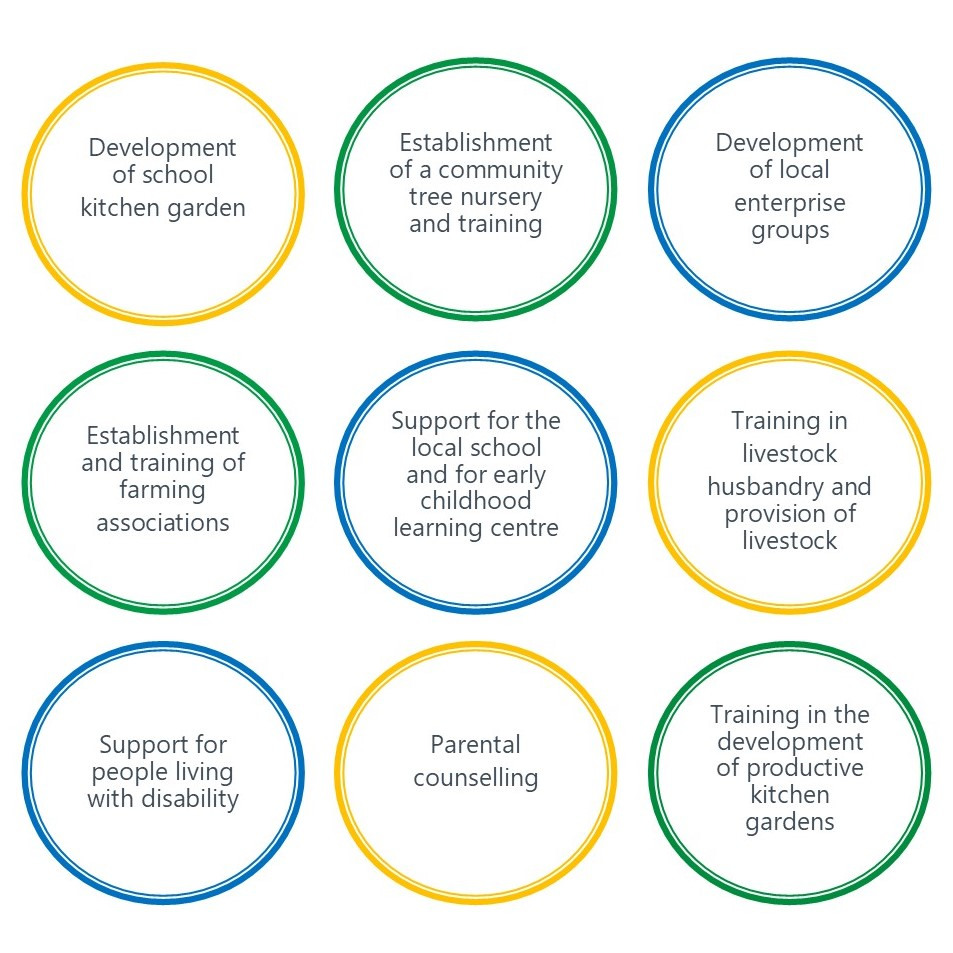Building Communities - The Relief of Poverty
Our aim is to reduce poverty sustainably, where it is most acute
The Challenge
In Nyamasheke and Rusizi districts, where Rwanda Action works, more than 60 per cent of the population live in extreme poverty ($2 or less a day). Local income deprivation means that many families live in poverty and so the whole community is impacted.
In an area where most people rely on subsistence farming, we understand the impact of soil depletion and erosion and the challenges of growing food in a stressed environment against the backdrop of a changing climate. We design projects to deliver environmental gains alongside socio-economic benefits.
Our Solution
We have adopted a targeted approach to achieving sustainable poverty reduction at the community level. Identifying needy communities and working closely with them in the planning stages enables us to design programmes and measure impact more precisely.
Impact
- Reduction in poverty where it is most acute
Key Performance Indicators
- Measurable improvements (based on the Grameen “Out of Poverty” index) in the following ten indicators:

Actions
Rwanda is organised into districts, sectors, cells and villages. A cell typically contains six or seven villages and has a locally-elected council.
Working with the districts, Rwanda Action has identified the two most needy cells in which to pilot this approach. The first two pilot cells are Kinyaga in Rusizi District and Save in Nyamasheke District. We established a baseline by visiting families living below the poverty line as defined as less than $2 per day, carefully assessing their living conditions and needs. Our second cell in Rusizi district is Rugabano and we will select a second cell in Nyamasheke in mid-2024.
Together with the community leaders and local officials we devised a plan for each cell to support the poorest people to improve their lives. In each cell, this includes a selection of our established initiatives:

In each cell, we collaborate during a six-month assessment and planning period, which is followed by 18 months of implementation.
At the end of each year progress in the ten indicators is measured against baseline data.
In the third year Rwanda Action will withdraw from direct implementation but continue to monitor and evaluate.



The Future
Once Rwanda Action has supported six cells, we will use the evidence of the relief of poverty that has been achieved to encourage the government to replicate this methodology in its own programmes of poverty relief.
